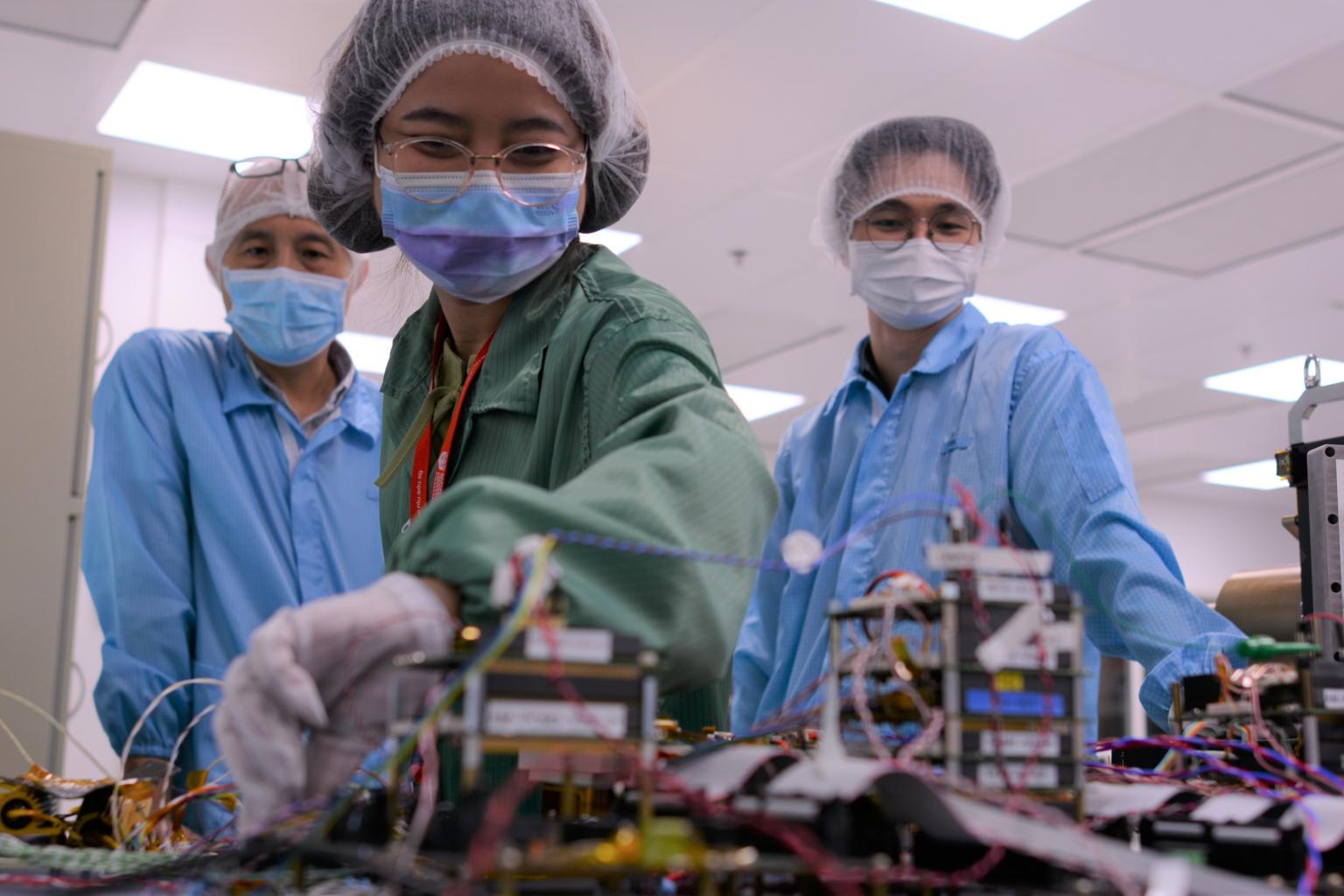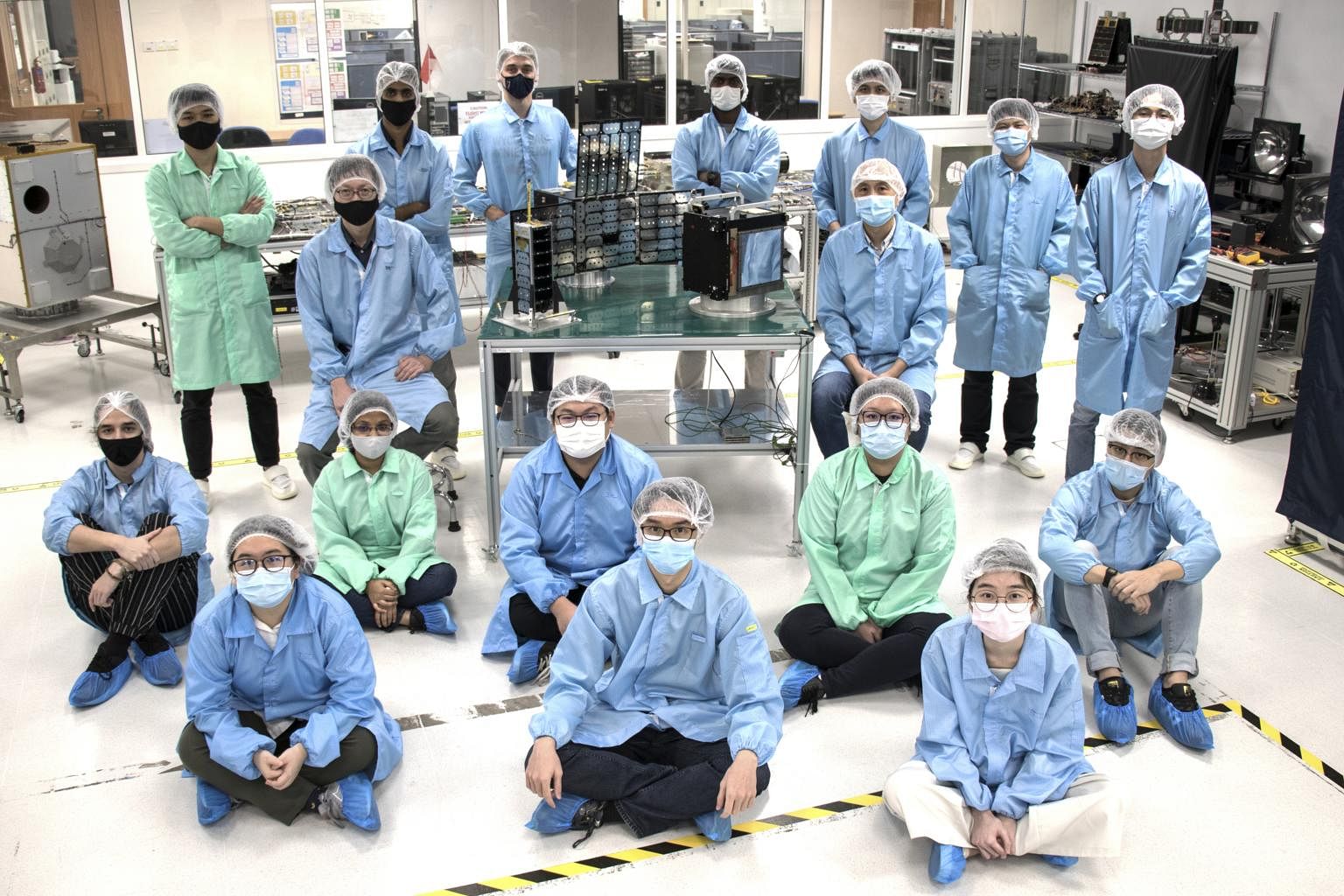Singapore to build and launch high-tech small satellite that will fly close to earth
Sign up now: Get ST's newsletters delivered to your inbox

Scientists from the NTU Satellite Research Centre developing new satellite technologies in their lab.
PHOTO: NTU
Follow topic:
SINGAPORE - Singapore will build an advanced small satellite - the size of a mini refrigerator and weighing 100kg - that will fly very close to earth to trial new technologies and test the emerging space of flying satellites at low altitudes.
Unlike conventional satellites that soar between 500km and 800km, the micro satellite will fly some 250km above the earth, being the first satellite in Singapore to do so. Planes fly about 10km above the earth's surface.
A new space consortium, led by Nanyang Technological University (NTU), will helm the project. The satellite will be built and launched into space in 2025.
Since the satellite will be half the distance from earth compared with a conventional one, its remote sensing abilities will double, said Mr Lim Wee Seng, executive director of NTU’s Satellite Research Centre.
This means that the satellite will be able to capture images of damage caused by natural disasters at a higher resolution, for instance. Telecommunication will also improve, as a satellite closer to earth will reduce network delays.
On Wednesday (Feb 9), members of the consortium, which include NTU's Satellite Research Centre, Temasek Laboratories at the National University of Singapore and NTU, and local satellite technology companies signed a research collaboration agreement to kick-start the satellite development.
The memorandum of understanding was inked on the sidelines of the two-day Global Space and Technology Convention held at Sheraton Towers.
Flying satellites at very low earth orbit (VLEO) is still an emerging area, and the Singapore project will also collect data to fuel the development of future commercial VLEO satellites with multiple uses, from communications to imaging to climate and weather monitoring.
This will help to position Singapore as a VLEO solutions hub, said members of the consortium in a joint statement on Wednesday.
Few satellites have been sent to fly at very low orbits. One of them was the European Space Agency’s GOCE satellite, which mapped variations in earth’s gravity with extreme detail.
The small satellite will also be equipped with Singapore's first locally designed space camera, which can take high-resolution images of objects as small as 50cm in length - about the size of a delivery parcel.
The camera, to be built by local tech firm LightHaus Photonics, is useful for applications such as supply chain monitoring, agriculture and mining. The company is also part of the new consortium.
One challenge of flying satellites close to earth is the machine running the risk of veering away and re-entering earth's atmosphere within a few days - due to atmospheric drag or friction.
“In lower orbit, the atmosphere is more dense, and there is a higher amount of drag or friction which slows the satellite. And when the satellite starts to slow down, it will eventually re-enter the earth. You need an engine to compensate for it,” explained Dr Mark Lim, co-founder of Aliena, a local space propulsion provider.
To solve that problem for the small satellite, Aliena has designed a fuel-efficient engine that will maintain the satellite’s low orbit by producing stronger propulsion with an exhaust speed of 40km/s. Conventional satellites have a propulsion system with an exhaust speed of around 8km/s, he added.
To further reduce atmospheric drag, the shape of the microsatellite will be longer and more rocket-like, compared with the rectangular or box-like conventional satellites.
Orbital debris, or space litter that comprises waste or unused material from spacecraft, is an ongoing problem ever since launching objects into space began more than 50 years ago.

To ensure that Singapore's small satellite does not end up as space junk after its use, its engine will be turned off, and the machine will descend to earth within a few days. "It will eventually burn up in the atmosphere during re-entry, leaving no debris in space," the statement said.
"This 'passive cleanup' will help to minimise the risk of collisions in future for VLEO spacecraft, in contrast to operating at low earth orbits where it is increasingly getting overcrowded," it added.
According to the United States' National Aeronautics and Space Administration, most orbital debris is in low earth orbit, where the International Space Station also flies.
The microsatellite project is supported by Singapore's national space office, the Office for Space Technology and Industry.
Since 2011, NTU has designed, built and sent nine Singapore satellites into space. The first was X-SAT, a 106kg remote sensing microsatellite built in collaboration with DSO National Laboratories.

